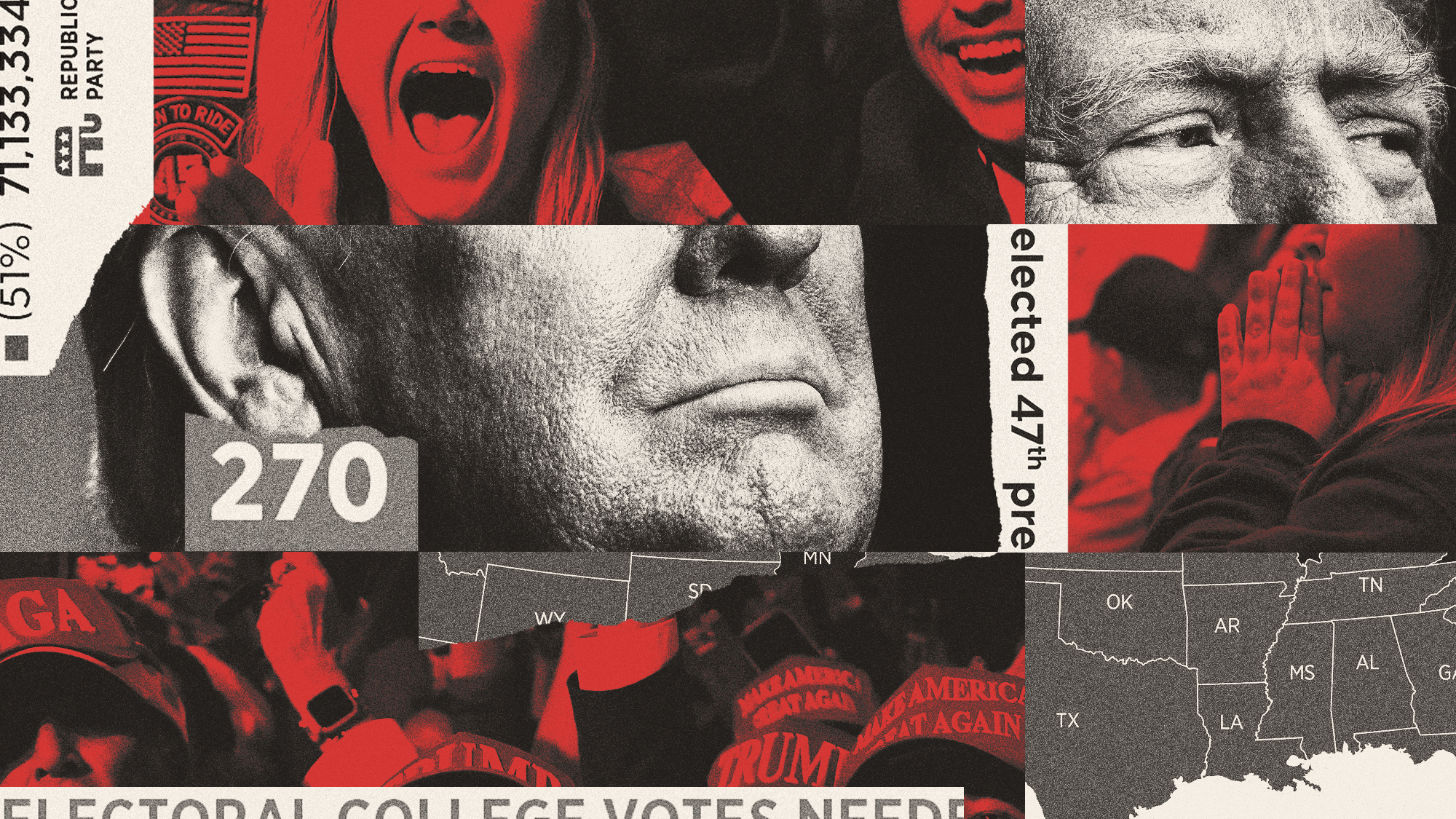Donald Trump will be America’s next president. This isn’t a fluke: He won both the Electoral College and (it appears) the popular vote. Voters moved definitively to the right.
That red shift occurred “across the U.S.,” said The New York Times. Raw numbers show the magnitude of Trump’s victory: He improved on his 2020 showing in 2,367 counties across the country — and lost ground in just 240 counties. Support for Trump has “swayed back and forth” during his three consecutive runs for the White House, said the Times, but on Tuesday he built support in many locales that have “historically leaned Democratic.”
Perhaps the biggest shocker for Democrats: The Latino vote is “continuing to slowly shift to the right,” said Axios. Hispanic-majority cities and towns in Florida and Texas — long solidly in the Democratic column in presidential races — this time turned out for the Republican candidate. Trump has long used “racist rhetoric” to describe Latino migrants, Axios said, but the results suggest that “many Latinos share Trump’s concerns about illegal immigration.” That will have profound political effects going forward: Latinos make up 20% of the population.
Subscribe to The Week
Escape your echo chamber. Get the facts behind the news, plus analysis from multiple perspectives.
SUBSCRIBE & SAVE
Sign up for The Week’s Free Newsletters
From our morning news briefing to a weekly Good News Newsletter, get the best of The Week delivered directly to your inbox.
From our morning news briefing to a weekly Good News Newsletter, get the best of The Week delivered directly to your inbox.
There is a “long-term trend of racial depolarization,” said The Economist. Race and class were once the bright dividing lines in politics — now education and religion seem to be the determining factors. “These characteristics divide Hispanic voters just as they do the rest of the country.” But Latino voters are not moving toward Republicans “at one pace.” The gender divide is another factor: Hispanic men voted for Trump by 10 points while Hispanic women went for Kamala Harris by 24 points. Meanwhile, 53% of white women and 60% of white men went for Trump, per CNN exit polls. For Democrats, though, it’s clear that “rebuilding their Hispanic coalition will be a difficult task.”
“The conventional wisdom of American politics is that Latinos are offended by anti-immigration rhetoric,” Daniel McCarthy said at The Spectator. But that conventional wisdom “isn’t really so smart” — American history shows that the “white ethnic” immigrants (Germans, Italians, Irish and others) eventually moved from Franklin Roosevelt’s coalition into Richard Nixon’s so-called “Silent Majority,” with a deep contempt for “left-wing cultural attitudes.” History is repeating itself: “Latinos are not white liberals.”
What next?
“Trump’s campaign pushed hard to court men, and particularly men of color,” said CNN. That effort “paid off.” More broadly, though, exit polls showed that voters of all stripes are “displeased with the state of the nation and its leadership.” The vast majority of respondents said they are “dissatisfied or angry” with America’s direction — and Trump won three-fifths of those voters. Harris won among voters who said democracy was the most important issue of 2024. Trump “won those who identified the economy as most important,” said CNN.
“Americans wanted change and that meant Trump,” Ed Kilgore said at New York magazine. That’s just old-fashioned politics — in a “change” election voters look to replace the party in power. The question now, Kilgore said, is whether Trump “can bring the kind of change he came to represent to his voters.” We have four years to find out.


